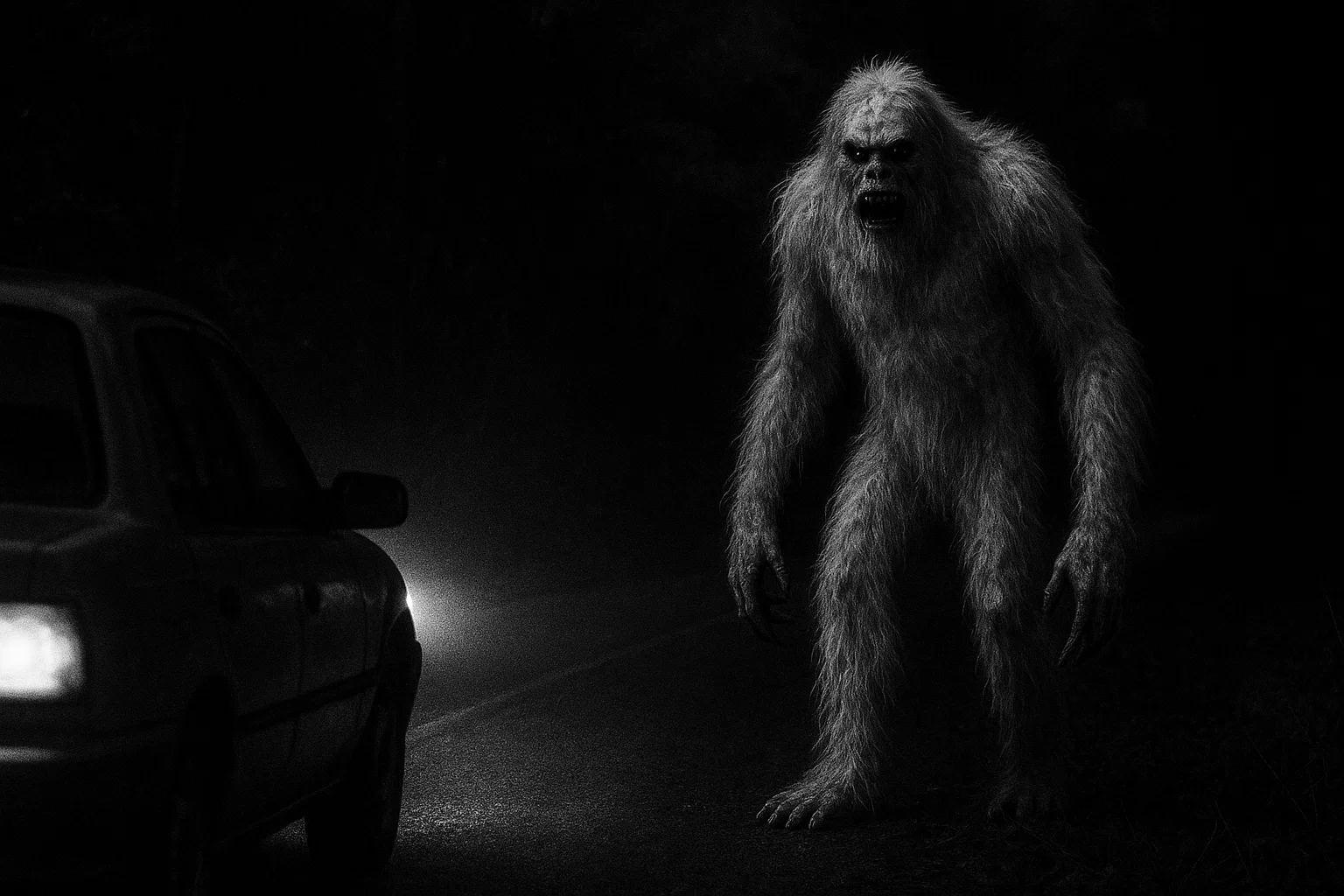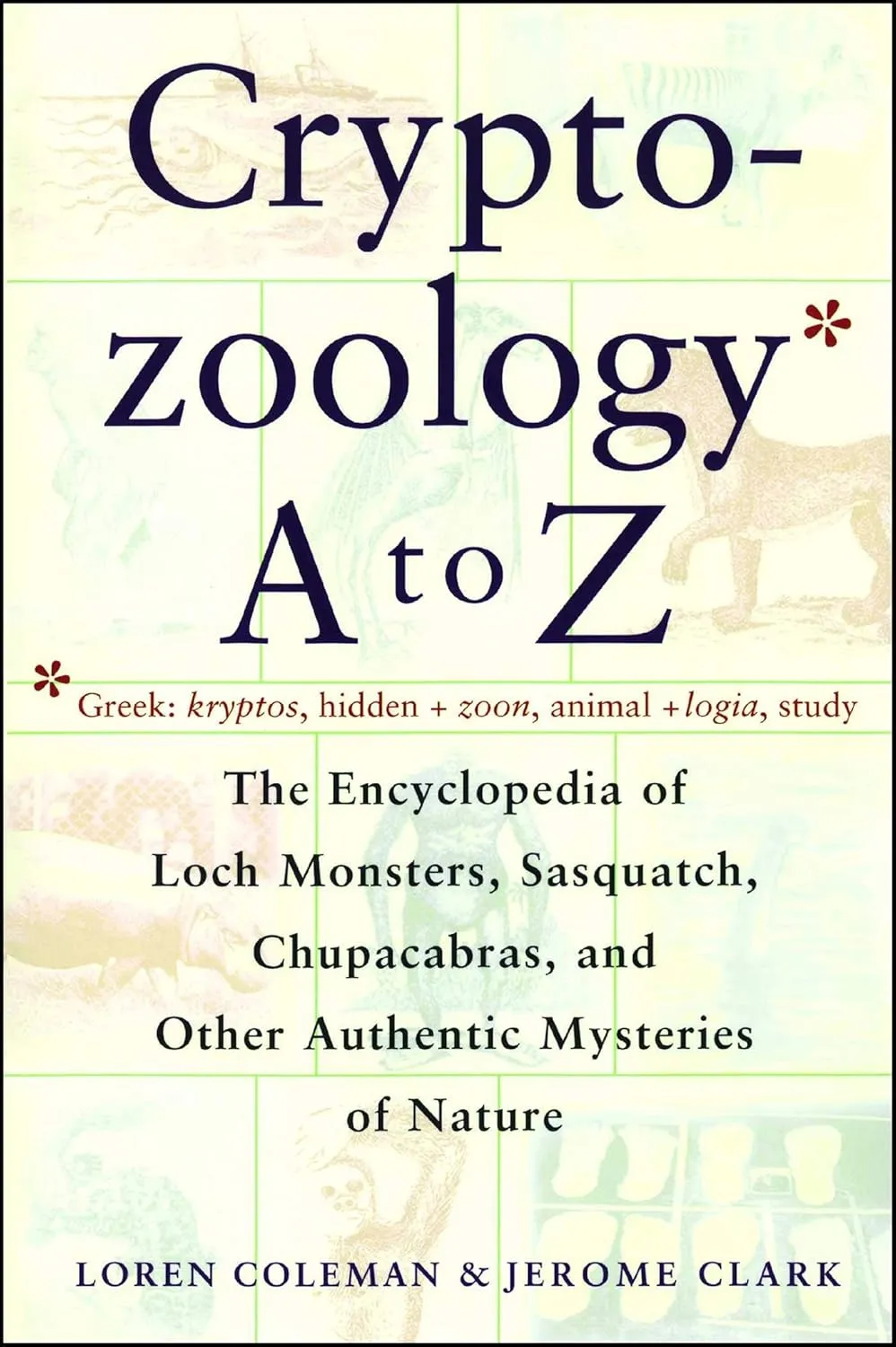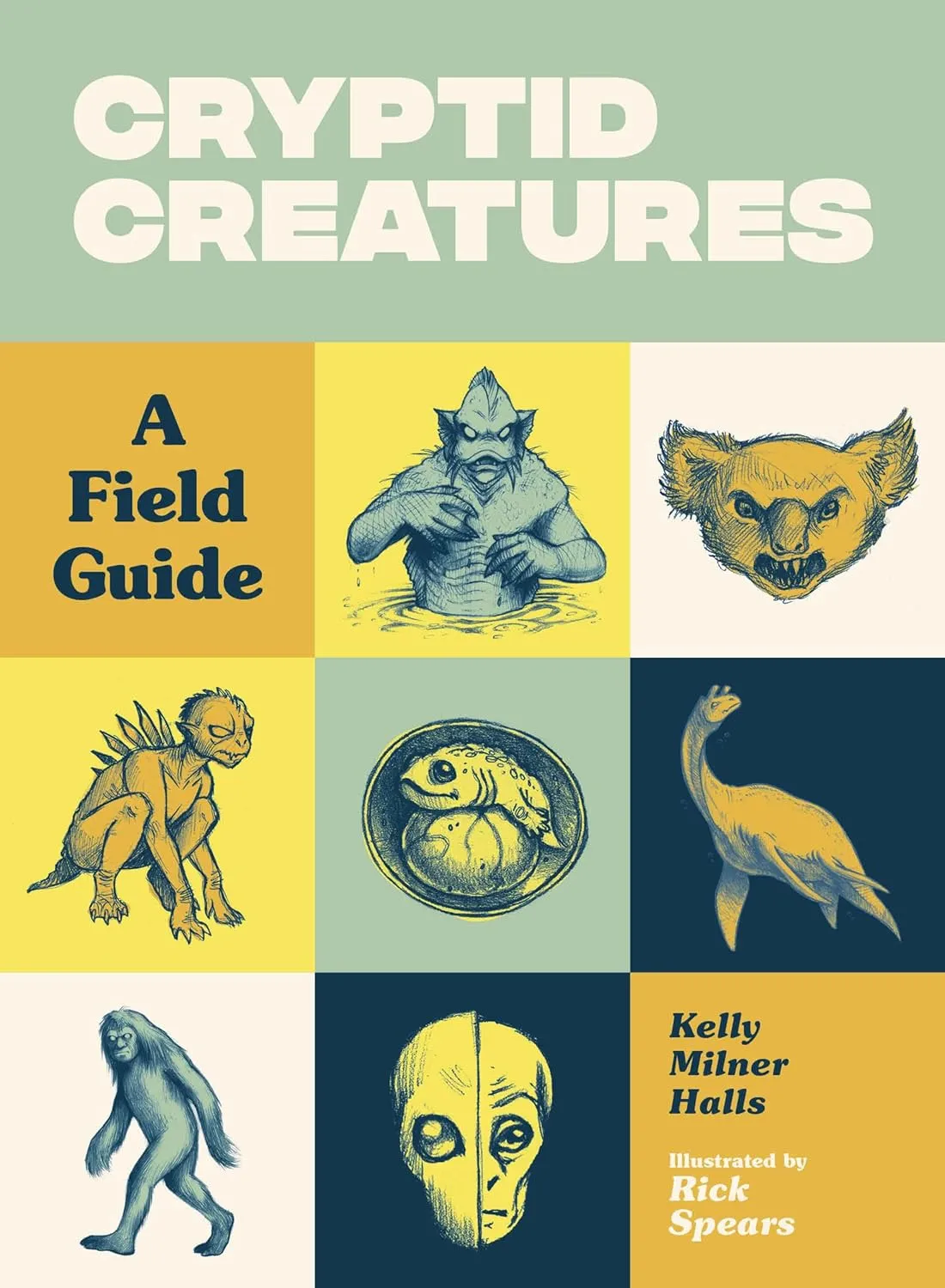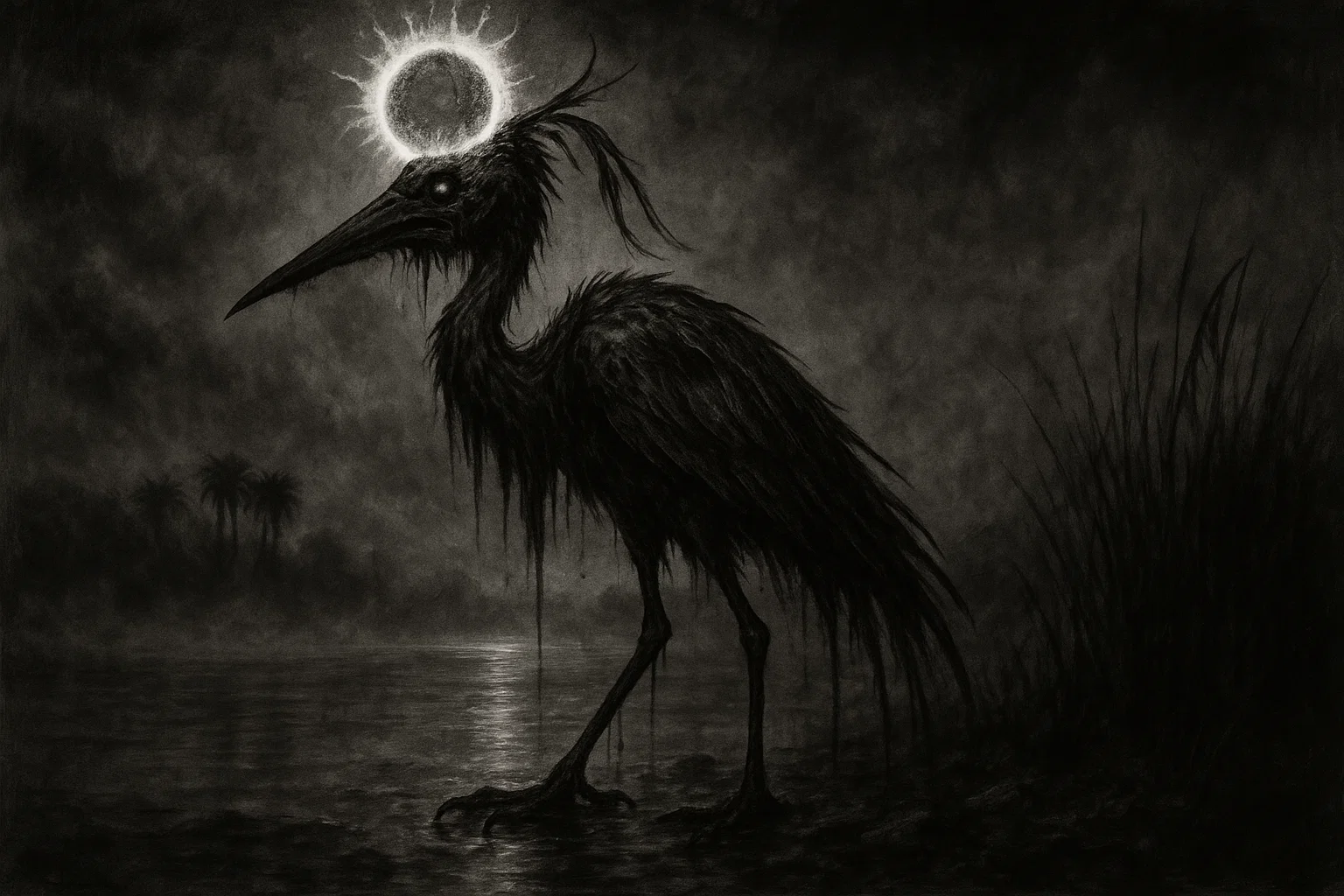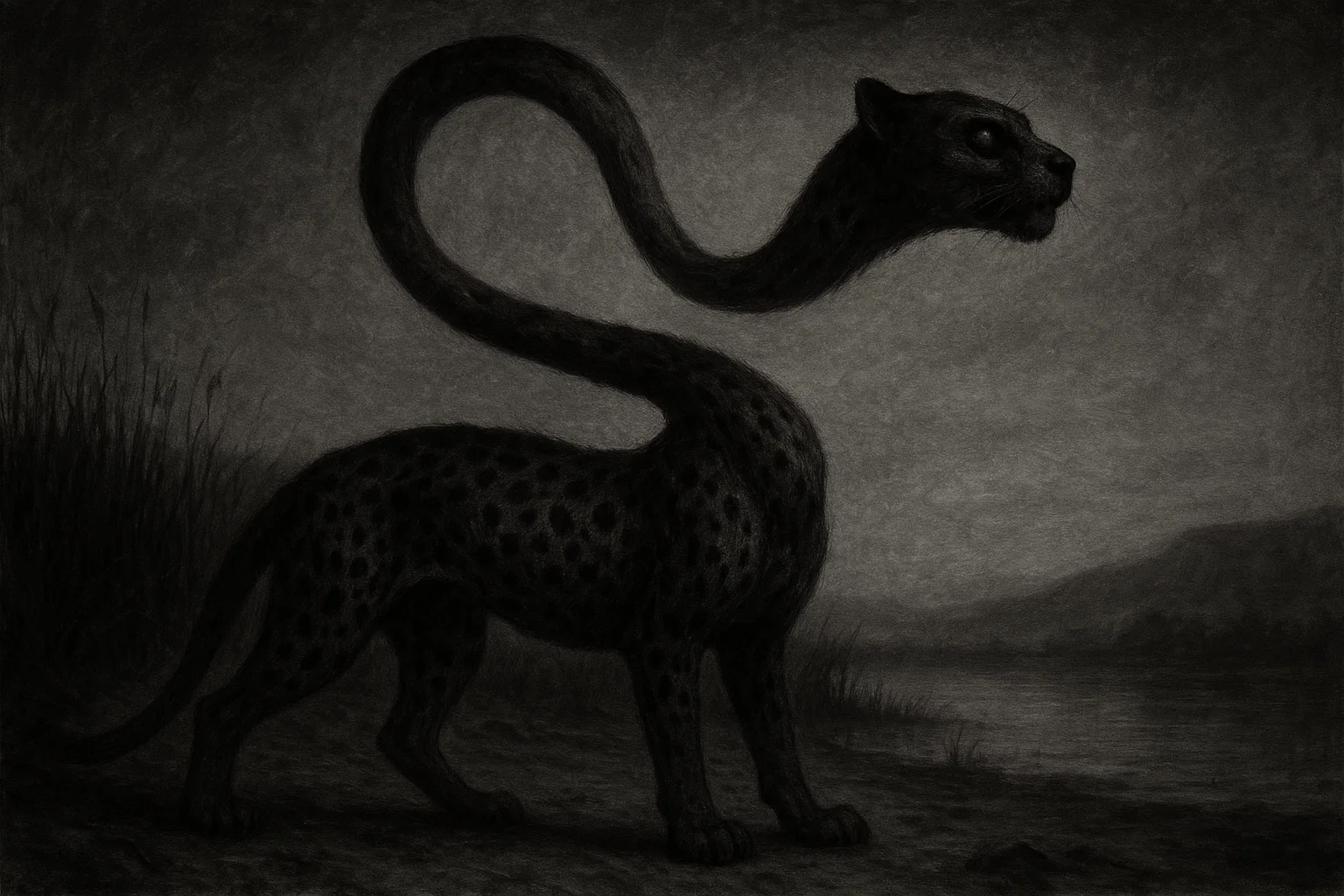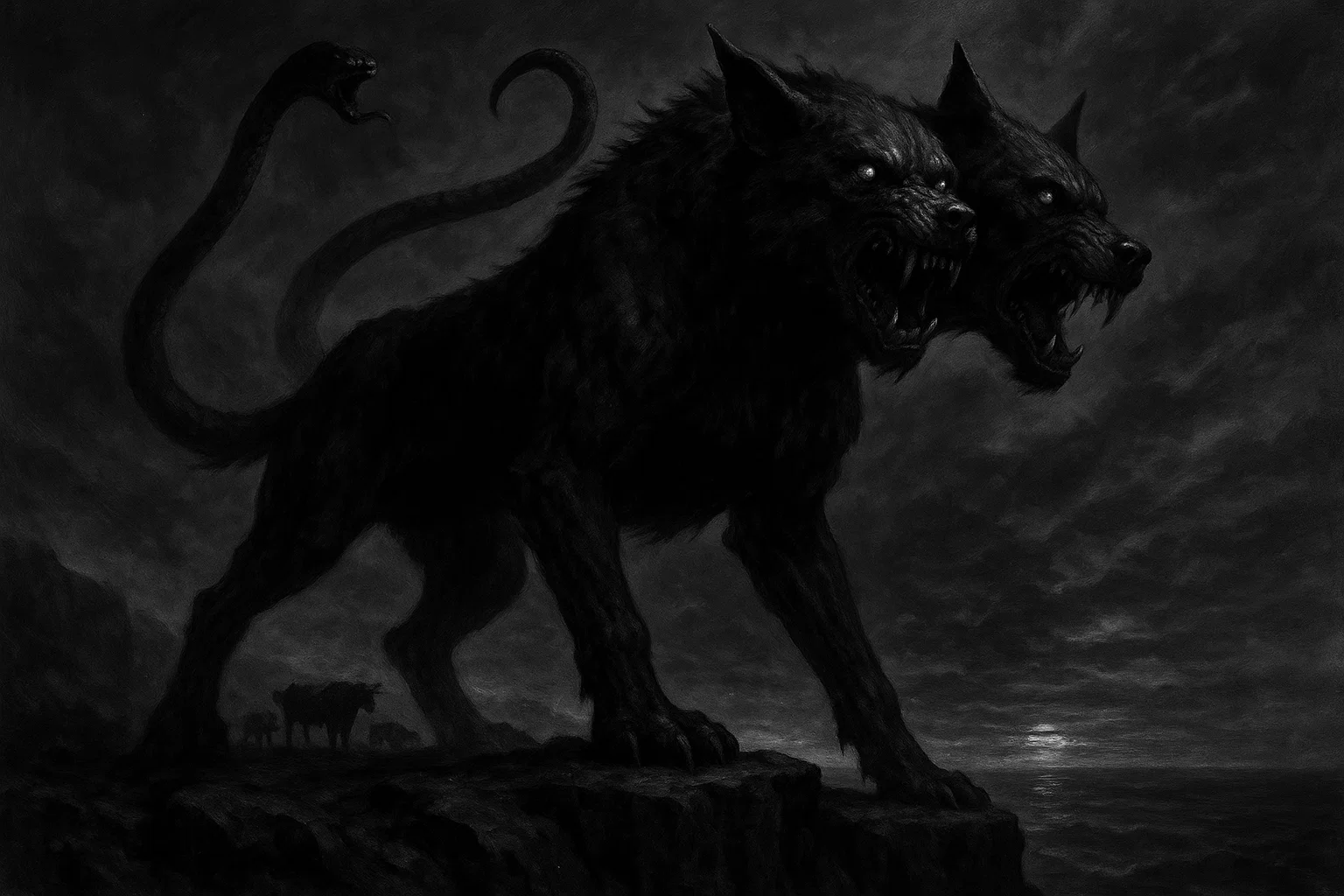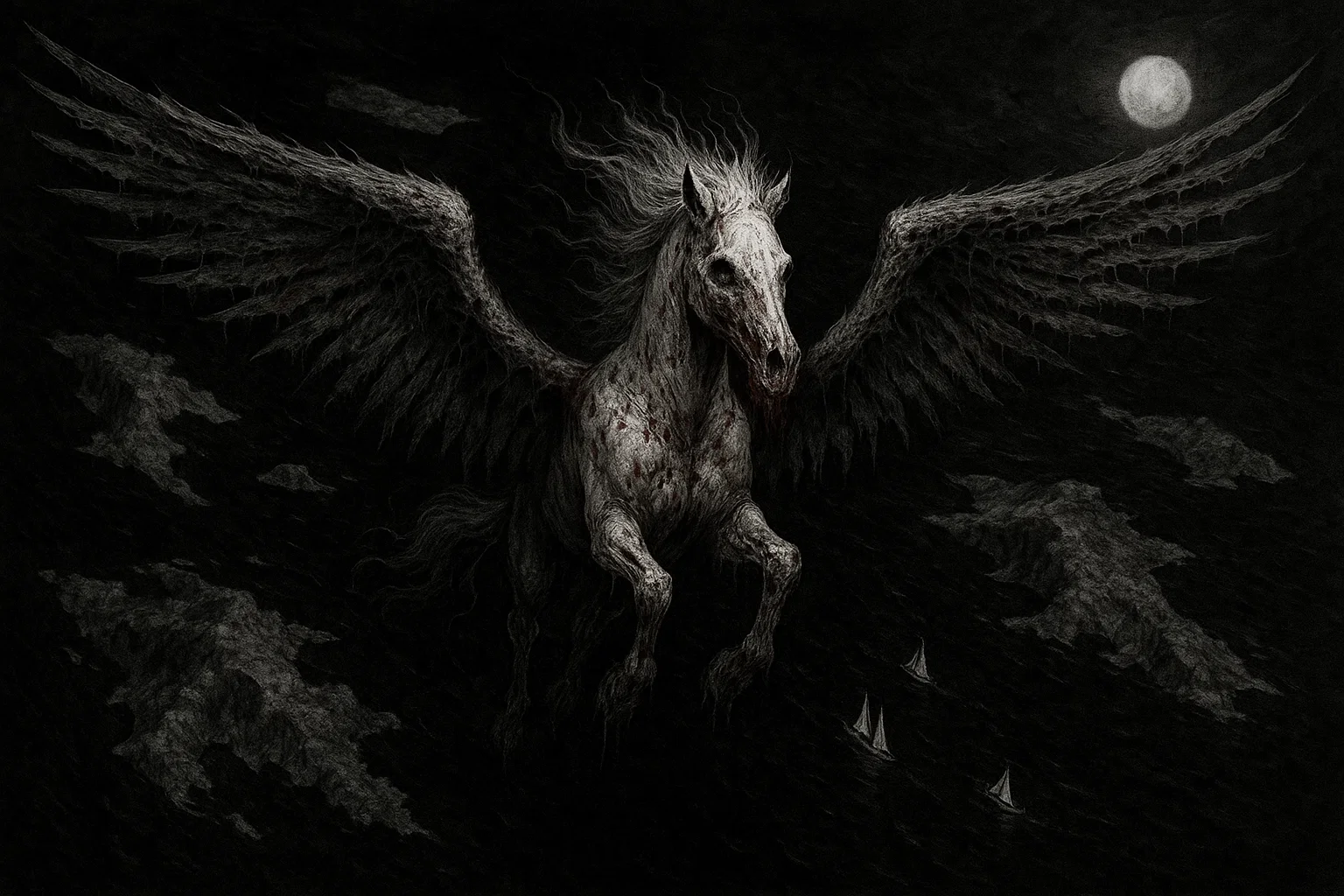The Alabama White Thang is a prominent, often conflicting, cryptid within the folklore of the American South. Primarily reported in the state of Alabama, it is most frequently described as a large, white-furred, bipedal creature known for an unnerving, high-pitched scream.
Sightings of this mysterious entity, which is sometimes referred to as the “Bigfoot of the South,” have been reported for nearly a century, concentrated in the heavily wooded, rural areas of the state.
Summary
Who or What Is the Alabama White Thang?
The Alabama White Thang is a Southern cryptid, a mysterious creature central to Alabama’s local folklore. It is a legendary hairy humanoid that has captured the local imagination, often sharing physical and behavioral characteristics with the North American Bigfoot or Sasquatch, leading to it being referred to as an “albino Bigfoot. “
However, some accounts diverge significantly, describing the creature as more feline or wolf-like, yet always massive and covered in brilliant white fur.
Its most distinctive trait, beyond its color, is the piercing, blood-curdling scream that witnesses report hearing in the woods, a sound often compared to that of a distressed woman or an infant.
The first widespread reports surfaced in the 1930s and 1940s across a tri-county area of north-central Alabama. The creature’s name, “Thang,” is said to reflect the local Southern pronunciation of “thing,” highlighting its classification as an unidentifiable entity. The consistent reports of its white coloration, large size, and unique vocalizations distinguish the Alabama White Thang from other hairy hominid cryptids.
The One Book That Turned “Monster Hunting” From Joke to Actual Science
Limited-Time: Up to 46% OFF!
Bigfoot, Loch Ness, Chupacabras, Mothman, Yeti, and dozens more – the original A-to-Z encyclopedia with 100+ fully researched cryptids, eyewitness accounts, expedition histories, and the evidence that made skeptics sweat. Loren Coleman and Jerome Clark’s 1999 classic that launched a thousand investigations.
What Does the Alabama White Thang Look Like? (100–200 words)
The physical appearance of the Alabama White Thang is consistently characterized by its size and its color. It is typically described as a towering bipedal entity, with height estimates frequently ranging from 7 to 10 feet when standing upright.
The body is reported to be massively built and covered head to toe in long, thick, shaggy fur that is stark white or extremely pale. This white coat provides a striking contrast against the dark Southern woods, making the creature distinct in sightings.
While often compared to a Bigfoot, which is typically brown or black, the Alabama White Thang’s descriptions sometimes vary, suggesting a creature that is morphologically more diverse than a simple ape.
Some accounts describe it as having feline features, like a large lion, or canine features, like a massive wolf, particularly when seen moving on all fours. A few reports also note that the creature’s eyes glow yellow or red in the dark, a feature that enhances its unsettling reputation.
The “Slough Thing” variant, a regional version, is sometimes described as a slightly smaller creature, closer to five feet tall, residing in marshy wetlands.
You may also enjoy:
Who Is the Demon Gäap? Powers, Rituals, and Origins
August 21, 2025
The Japanese Kappa Monster: A Dark Obsession With Humans
September 9, 2025
The 15 Most Haunted Places in Arizona
October 7, 2025
Habitat
The Alabama White Thang is a creature that is believed to live in the remote and rugged areas of north-central Alabama, particularly in the southern Appalachian Mountains.
This region has many forests and hills, making it a perfect hiding place for mysterious creatures. Most sightings of the Alabama White Thang have been reported in a triangular area that includes Morgan, Etowah, and Jefferson Counties.
Some specific places where people have claimed to see this creature include small towns like Walnut Grove, Moody’s Chapel, and Happy Hollow. It has also been spotted near important wildlife areas, such as the Wheeler Wildlife Refuge, which is a large, protected area along the Tennessee River.
These environments are full of thick trees, deep valleys, and vast unexplored lands that provide excellent cover for a strange, large animal.
In addition, there’s a variation of this creature known as the “Slough Thing,” which is particularly associated with the marshy wetlands near Big Nance Creek in Courtland. This suggests that this version of the creature might prefer watery or swampy areas, setting it apart from typical Bigfoot stories.
Most sightings occur at night, indicating that the Alabama White Thang is primarily active at night. This nocturnal behavior helps it stay hidden among the dense trees and shadows, out of sight of humans.
Alabama White Thang Sightings
| Date | Place | Witness Details | Description | Reliability |
| Early 1900s | Northern and Central Alabama | Various early settlers and local residents | Vague descriptions of a large, pale, hairy monster; accounts varied between a dog, wolf, or ghost. | Low: Vague, general folklore |
| Early 1930s (Great Depression era) | Big Nance Creek, Courtland (Lawrence County) | Mother of former Mayor Linda Peebles (variant) | Encountered the smaller “Slough Thing” near the marshy creek; stories passed down through generations. | Medium: Generational family account of regional variant |
| 1940s | Walnut Grove (Etowah County) | A couple driving on a remote road | Spotted a huge, white, manlike creature crouching; it rose bipedally and emitted a piercing shriek. | Medium: Two witnesses, highly publicized account |
| 1940s | Morgan, Etowah, and Jefferson Counties | Multiple reports across the tri-county area | Consistent accounts of a large, white-furred, shaggy humanoid often heard before being seen (the shriek). | Medium: Multiple independent reports establishing core legend |
| 1940s | Unspecified, possibly Morgan County | A sleeping individual under a tree | Woke up to a white, lion-like creature with a bushy tail lying nearby; led to some early ‘cat-like’ descriptions. | Low: Single witness, ambiguous circumstances |
| Late 1970s | Black Warrior National Forest | A group of experienced hunters | Observed a towering, white-furred beast moving with silent fluidity through the dense undergrowth. | Medium-High: Multiple, experienced witnesses |
| Mid-1990s | Near a suburban development | A group of 3-4 children playing | Saw a hairy white thing in the treeline; one witness claimed it hunch-backed and walked away when startled. | Low: Child witnesses, but immediate, consistent report |
| 2002 | Guntersville State Park campground | A couple driving after dark | Saw a huge albino Bengal tiger eating a dead deer on the roadside; a description supporting the exotic animal theory. | Medium: Two consistent witnesses, but fits known exotic species |
| 2014-2015 (approx.) | Near I-59, traveling through Alabama | A scientist driving late at night | Saw a large deer crash from the woods, followed by a very large white, wolf-like creature that stopped suddenly and had human-like eyes. | Medium: Single, educated witness, later linked to the legend |
| Recent (Undated) | Cathedral Caverns area | A couple on a camping trip | Claimed to have seen two white creatures surrounding and inching closer to their campsite. | Low: Informal report, lacks precise date/details |
This Book Turns the Entire United States Into One Giant X-Files Map
Limited-Time: Up to 38% OFF!
J.W. Ocker traveled the country collecting the weirdest local legends and marks the real-world locations where the Beast of Bray Road, the Dover Demon, the Wendigo, and hundreds more have been spotted. Part travel guide, part bestiary, 100% nightmare fuel.
The Walnut Grove Incident (1940s)
One of the most widely cited and publicized early incidents occurred in the rural community of Walnut Grove during the 1940s. The account involves a couple who were driving late at night down a remote stretch of road.
As their vehicle’s headlights swept across the tree line, they reportedly illuminated a huge, manlike creature crouched there. When the light hit it, the beast is said to have risen up on its two back legs, confirming its bipedal nature.
The encounter culminated with the creature letting out a piercing, unearthly shriek, which is a defining characteristic of the Alabama White Thang legend.
Hunters in the Black Warrior National Forest (Late 1970s)
A compelling sighting from the late 1970s involved a group of experienced hunters deep inside the Black Warrior National Forest. The hunters reportedly had a close-range encounter with the creature. Their descriptions were notably consistent, detailing a towering, massive beast that was covered in unmistakable white fur.
A key element of this report was the creature’s movement, described as disconcertingly silent and fluid as it moved through the thick, noisy undergrowth.
The combination of multiple, presumably credible witnesses and the uniform description lends this report particular weight within the body of Alabama White Thang lore.
The Cat-Like Descriptions (1940s and Later)
While the predominant image of the Alabama White Thang is that of a white Bigfoot, a persistent minority of sightings offers a feline or canine interpretation.
One reported incident from the 1940s involved a witness who described the creature as being between a bushy dog and a shaggy lion, noting it had a tail like a big bush of hair. Another, later, informal report detailed waking up to a white, lion-like creature resting next to them.
These accounts, coupled with the 2002 sighting of a huge albino Bengal tiger described in the Guntersville State Park campground, introduce an important variation to the legend.
These descriptions are often cited by skeptics and cryptozoologists alike as evidence for the escaped exotic animal theory, suggesting the “White Thang” label may encompass several different, though equally rare, misidentified species.
You may also enjoy:
Evidence & Investigations
The evidence supporting the existence of the Alabama White Thang is largely anecdotal, consisting primarily of numerous eyewitness accounts and alleged audio recordings of its distinct vocalizations.
As with many cryptids, no definitive physical evidence—such as a body, clear photographs, video documentation, or verifiable DNA samples—has ever been scientifically confirmed.
Footprint Casts and Tracking
There have been occasional reports of large, mysterious footprints in areas where people claim to have seen the Alabama White Thang, a creature said to be very big and possibly walk on two or four legs.
Despite these reports, there hasn’t been any scientifically verified evidence, such as a detailed analysis of footprints that can definitely be linked to this creature and not to known animals.
Because there’s no standard way to investigate or collect such evidence, any footprints that are found remain part of local folklore rather than proven facts.
Audio Evidence
The creature’s signature is its unnerving, high-pitched scream, described as a woman’s shriek or a baby’s cry. There have been claims of audio recordings capturing this specific vocalization.
Cryptozoological investigators occasionally examine these recordings, but the sounds are often determined to be misidentified known animal calls, such as those from bobcats, coyotes, or even certain species of owls, which can produce surprisingly human-like distress sounds.
Cryptozoological Studies
Formal scientific or government-funded expeditions into the areas of high sighting concentration do not exist. The legend is primarily investigated by private cryptozoological researchers and local enthusiasts.
These private investigations focus mainly on gathering and cataloging eyewitness testimonies and on searching common sighting areas, such as the Wheeler Wildlife Refuge or the deep woods of the tri-county area, for tracks or other physical traces.
To date, these efforts have not yielded conclusive evidence to shift the creature’s status from a regional legend to a scientifically recognized animal species.
People Swore They Saw Something Impossible… This Book Shows You the Photos, Tracks, and DNA
Limited-Time: Up to 18% OFF!
Gorgeous full-color illustrations meet hard evidence: hair samples that don’t match any known animal, sonar hits in Loch Ness, night-vision footage, and survivor testimonies. Kelly Milner Halls separates hoax from holy-crap-this-might-be-real for every major cryptid still out there.
Theories
The Albino or Leucistic Bear Theory
One of the most practical and frequently proposed explanations is that the Alabama White Thang is a misidentified known animal that exhibits a rare genetic condition. Specifically, a black bear (Ursus americanus) with albinism or leucism would fit several key descriptions. An upright-standing black bear can appear massive and bipedal.
While not naturally occurring in Alabama, a white-coated bear, an extremely rare event, could easily be mistaken for an unknown entity, especially at night or from a distance. Furthermore, the vocalizations of bears can range from growls to loud, roaring sounds, which could potentially be misconstrued as the creature’s alleged scream.
This theory accounts for the size, occasional bipedal stance, and stark white color.
Unknown Primate or Relict Hominid Theory
This theory places the Alabama White Thang within the broader spectrum of relict hominids, suggesting it could be a subspecies of Bigfoot/Sasquatch that evolved or maintains an unusual white coat. Proponents argue that its consistent bipedal stance, massive size, and primate-like movements align with hairy humanoid cryptids worldwide.
The white fur would be an adaptation or a rare genetic trait, similar to how the Yeti is often described with lighter-colored fur, possibly for camouflage in a specific environment.
The difference in vocalizations—the piercing scream—could indicate a distinct species or a regional variation of vocal behavior compared to the deeper hoots and calls reported for Bigfoot.
Misidentified Exotic Feline Theory
Some descriptions of the Alabama White Thang, particularly those noting cat-like movements or a lion-like appearance, point toward an escaped exotic animal. Specifically, a large albino cat, such as a tiger or a lion, could potentially survive for a time in the vast, remote wooded areas of Alabama.
The 2002 sighting in Guntersville State Park, where witnesses reported seeing an albino Bengal tiger, is often cited as a possible explanation for some encounters.
While the Southern habitat is not natural for these species, private ownership of exotic animals is common. Escapes are a possibility, which could account for the white color, large size, and feline characteristics reported by some witnesses.
Comparison with Other Similar Cryptids
| Cryptid Name | Primary Habitat | Color/Fur | Key Trait | Behavioral Trait |
| Bigfoot (Sasquatch) | Pacific Northwest, North America | Dark brown, black, or reddish-brown | Large, muscular, human-like gait | Mostly observed to be shy and elusive |
| Yeti (Abominable Snowman) | Himalayan Mountains | White, gray, or brown | Hairy, ape-like, lives at high altitudes | Elusive, often leaves large footprints |
| Skunk Ape | Florida Everglades, Southern U.S. | Dark brown, black | Foul, noxious odor; similar to Bigfoot | Emits a foul smell, elusive in swampy areas |
| Wampa | Boone, Iowa (Fictionalized local legend) | White or pale | Hairless, gorilla-like with lion features | Aggressive behavior reported by some |
| Fouke Monster | Fouke, Arkansas | Dark hair (brown/black) | Smells like a “wet dog,” three toes on feet | Reported to be aggressive towards humans |
| Beast of Bray Road | Elkhorn, Wisconsin | Grayish-brown fur | Canine/wolf-like, stands on hind legs | Predatory behavior toward animals |
| Orang Pendek | Sumatra, Indonesia | Dark hair, reddish-brown | Smaller (3-5 ft), bipedal, non-aggressive | Ground-dwelling, often uses arboreal paths |
| Pennsylvania White Bigfoot | Pennsylvania | Mostly or all white fur | Similar to Bigfoot, very dark eyes | Sightings clustered since the 1970s |
| Chupacabra | Puerto Rico, Latin America, Southern U.S. | Varies (reptilian/canine), often hairless | Drains blood from livestock | Predatory, nocturnal attacks on animals |
You may also enjoy:
Tahoe Tessie: The Mysterious Lake Monster of the Sierra Nevada
November 4, 2025
Inside the Lizzie Borden House Haunting: Real Ghost Encounters?
October 22, 2025
The Leshy: Shape-Shifting Monster of Slavic Mythology
September 10, 2025
What Is Residual Ghost Energy?
September 4, 2025
Is the Alabama White Thang Real?
The question of whether the Alabama White Thang actually exists is still up for debate. It’s a topic rooted in local folklore and in stories shared over the years.
Although there have been reports about this mysterious creature for over a century, no one has been able to provide solid evidence to prove it’s real. Many of these reports describe the beast as being bright white, very large, and making a distinct, high-pitched sound. This consistency suggests that many people are seeing something strange.
Some think these sightings might be caused by people mistaking other animals for the White Thang. For example, they might be seeing a rare white bear, a big wild dog, or even an exotic pet that got loose.
Even so, the fact that so many people from different backgrounds and generations continue to share similar stories—often without knowing about the existing legend—adds to the mystery.
While experts generally believe the White Thang is probably just a mix-up or a made-up tale, it remains an important part of Southern American culture, representing the region’s wild, unexplored nature.

